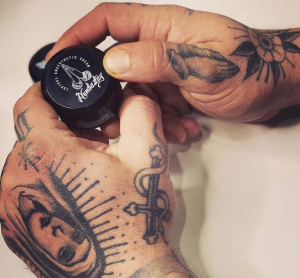Do you have any idea about Topical Numbing Cream? When scheduling a tattoo, bikini wax, or permanent makeup session, your main concerns are likely to be the potential pain during the procedure and the final results. This pain is unbearable for many people, and they need some solution for it.

Topical anaesthetics, also known as numbing creams, frequently play an important role in both of these aspects of the inking or hair removal experience. There are numerous myths about these numbing creams, and learn about them. Here are the common myths about the numbing cream that the experts debunked:
Numbing creams don’t work
If science shows the result of something as useful for humans, people will easily spread the negative points due to their bad intuition. Topical anaesthetics contain the same ingredients as local anesthesia, injected into patients during minor surgery.
On the other hand, topical versions are applied to the skin rather than absorbed through it. Numbing creams must diffuse through the skin to reach the nerves, whereas injected anaesthetics are deposited directly at the nerve sight. You can Buy Numbing Cream with the trust that it will work well. Seriously it was found to be effective for the pain.
Tetracaine, prilocaine, and benzocaine all work the same way
While these caines are topical numbing cream agents, each has unique characteristics. They all differ significantly in numbing strength, numbing speed, and toxicity.
According to some experts’ experience, there is a clear winner that Lidocaine is the most extensively used caine due to its strong numbing properties, it works the quickest, and it is the least toxic of all. People should always consider the words of experts and not the rumours spread by some normal people.
Clients who believe they are allergic to Lidocaine
The most common active ingredient in topical anaesthetics is Lidocaine. Lidocaine is the most common ingredient of the Topical Numbing Cream. Lidocaine allergies are extremely uncommon, even though they are theoretically possible. However, it is significant to note that Lidocaine must be dissolved in another substance before use, which means that an adverse reaction could be caused by something other than Lidocaine.
People who think they are allergic to Lidocaine are allergic to one of the ‘filler’ ingredients in which the Lidocaine is dissolved. If a patient tells you that they are allergic to Lidocaine, you should inform them of this possibility.

It makes no difference if you clean your skin before applying a topical anaesthetic
According to experts, everyone should understand that this belief is completely false. One of the most effective things you can do to help the absorption of your topical cream is to clean and exfoliate the skin before applying it.
Because the epidermis, the top layer of skin, is the most difficult layer for a topical cream to accumulate, trying to remove its outer layer through dermabrasion greatly improves absorption. Before your appointment, thoroughly cleanse the area with fragrance-free skincare products, exfoliate, and then buy Numbing Cream.
Final thoughts:
Thus, the points listed above are only a few myths, and apart from these points, various other myths have also been debunked by the experts. The effect of Topical Numbing Cream is always there, and it is found to be useful for people to bear the pain during injections, tattoos etc. Throw away the myths from your mind and buy the numbing cream. For more information about topical numbing cream to contact numbastay.